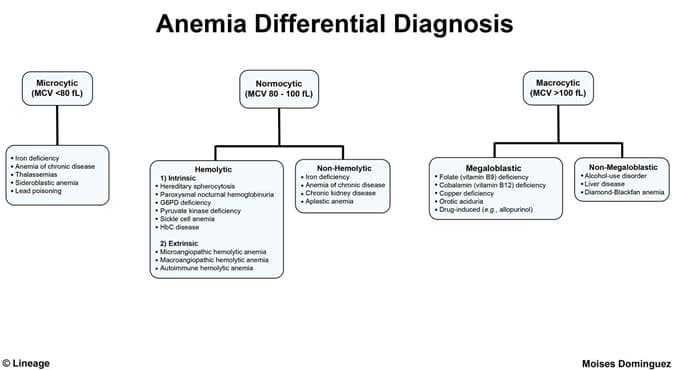Snapshot
- A 45-year-old man with history of stage 5 chronic kidney disease presents with increased shortness of breath, exercise intolerance, and general weakness. He regularly receives dialysis treatment. On physical exam, he is notably pale. He also has conjunctival pallor. Laboratory results reveal that he is anemic with normal iron levels. His reticulocyte count is low. Given his history of chronic kidney disease, he is started on EPO.
Introduction

- Anemia of renal failure, or anemia of chronic kidney disease is a normochromic, normocytic anemia
- Pathogenesis
- erythropoietin (EPO) is synthesized in the kidney
- EPO stimulates red blood cell (RBC) production
- in chronic kidney disease, there is decreased EPO production
- leads to apoptosis of erythroid progenitor cells
- leads to decreased reticulocyte count and RBC production
- other factors contributing to anemia in chronic kidney disease include
- uremic-induced inhibition of RBC production
- shortened half-life
- Risk factors
- decreased glomerular filtration rate
- angiotensin receptor blockers
- ACE-inhibitors
Presentation
- Symptoms of anemia, which typically occur if hemoglobin < 10 g/dL
- fatigue
- generalized weakness
- dyspnea
- lightheadedness
Evaluation
- Anemia
- hemoglobin < 13 g/dL in men
- hemoglobin < 12 g/dL in women
- ↓ Reticulocyte count
- May have normal iron levels
- Signs of kidney damage
- albuminuria
- electrolyte abnormalities
- ↓ glomerular filtration rate
Differential Diagnosis
Treatment
- Medical management
- erythropoiesis-stimulating agents (e.g., EPO)
- iron supplement
- red cell transfusion only in urgent situations with hemodynamic instability
Complications
- Untreated anemia increases the risk for cardiovascular events and progression of CKD
- For patients with CKD, maintaining hemoglobin of > 12 g/dL will increase the risk of stroke, diabetes, and cardiovascular events


